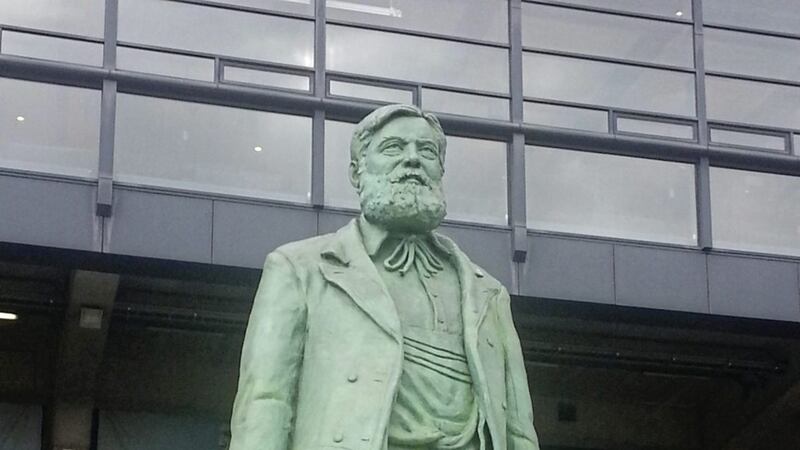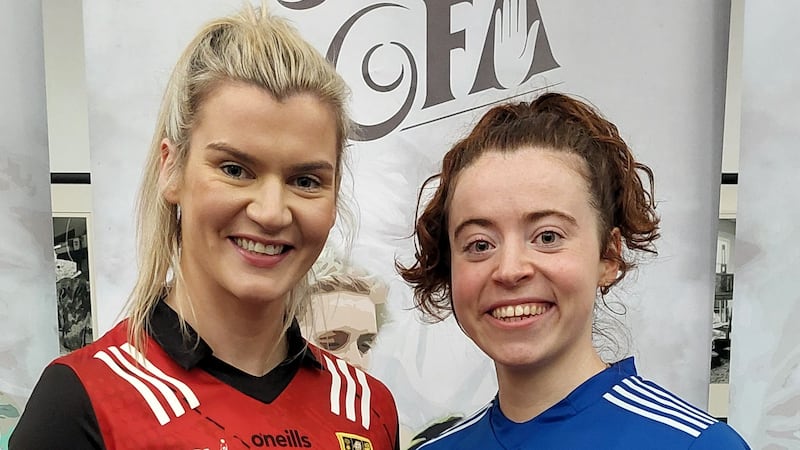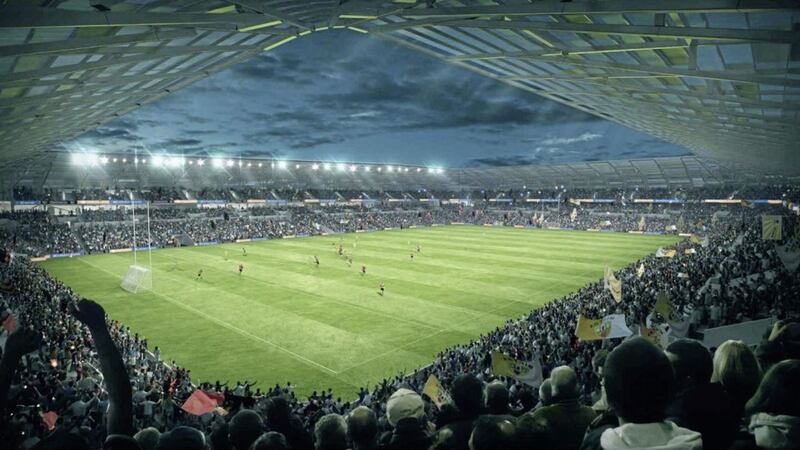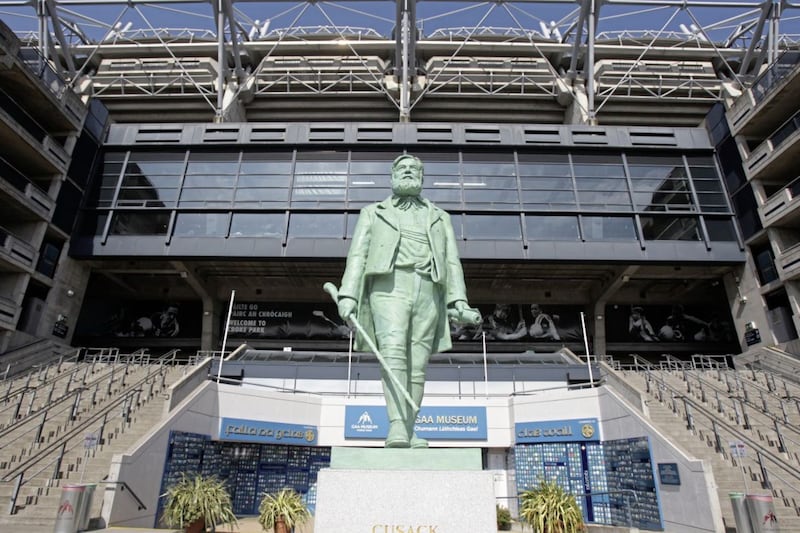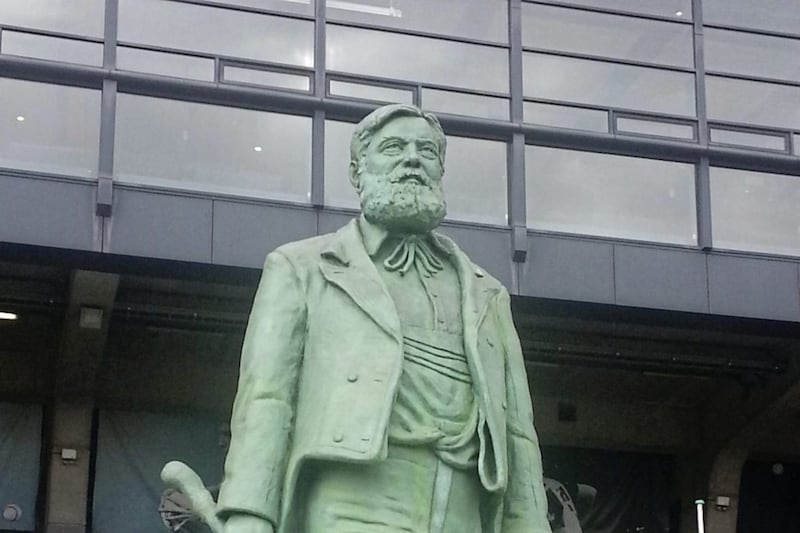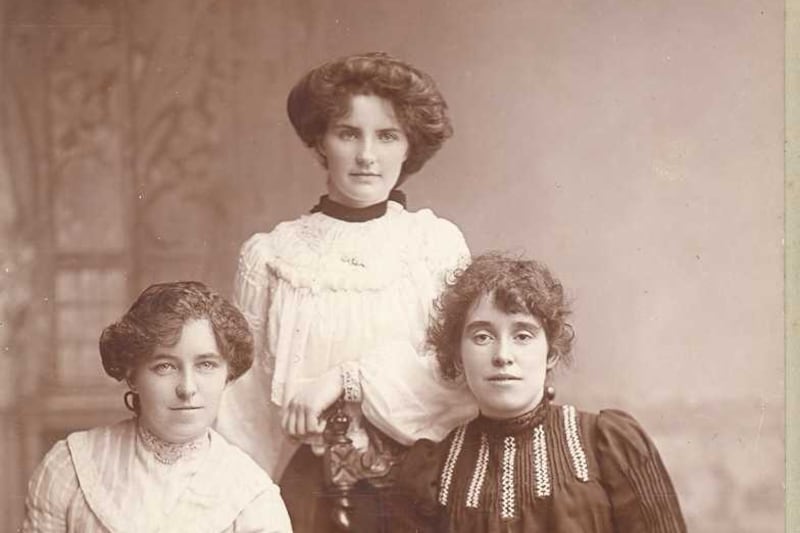LAST time GAA historian Michael Anderson spoke to The Irish News he had reached a dead-end in his search to trace down the family of GAA founder Michael Cusack. Since then Michael has completed his journey and brought together the American and Australian branches of the GAA’s first family. Andy Watters writes…
EARLY last year a young New Yorker called Kerry King arrived at Croke Park curious to learn about her Irish ancestry.
Until a few days before her visit she’d never heard of the GAA or the famous stadium that owes its existence to the vision and genius of Michael Cusack, the founding father of the Gaelic Athletic Association 133 years previously.
Michael was Kerry’s great-great-great uncle.
Standing in the shadow of the stand that bears his name, she gazed up at the iron statue of her relative – brother of her great-great-great grandfather Patrick Cusack – that welcomes fans from far and wide to Croke Park and must have struggled to take in how her family had been at the root of it all.
She was the first member of the Cusack family to visit the stadium for almost 70 years.
Kerry’s visit to ‘Headquarters’ did not happen by chance, on the contrary it was the result of eight years’ of painstaking research by historian Michael Anderson.
Last time he spoke to The Irish News, in December 2015, Michael had identified all four strands of the Cusack diaspora but had been unable to get in touch with anyone from the New York branch of the family.
Since then he has cracked the code and can now claim to be the only person who has been able (and many others have tried) to trace the entire Cusack family – Michael, his brothers Patrick, Thomas and John and sister Clare –from their humble origins in Clare to distant lands thousands of miles apart.
A lifelong GAA fan, the trigger for Michael’s research into the Cusacks came from the Down county board.
“It all started with a phonecall from Fintan Mussen,” he explained.
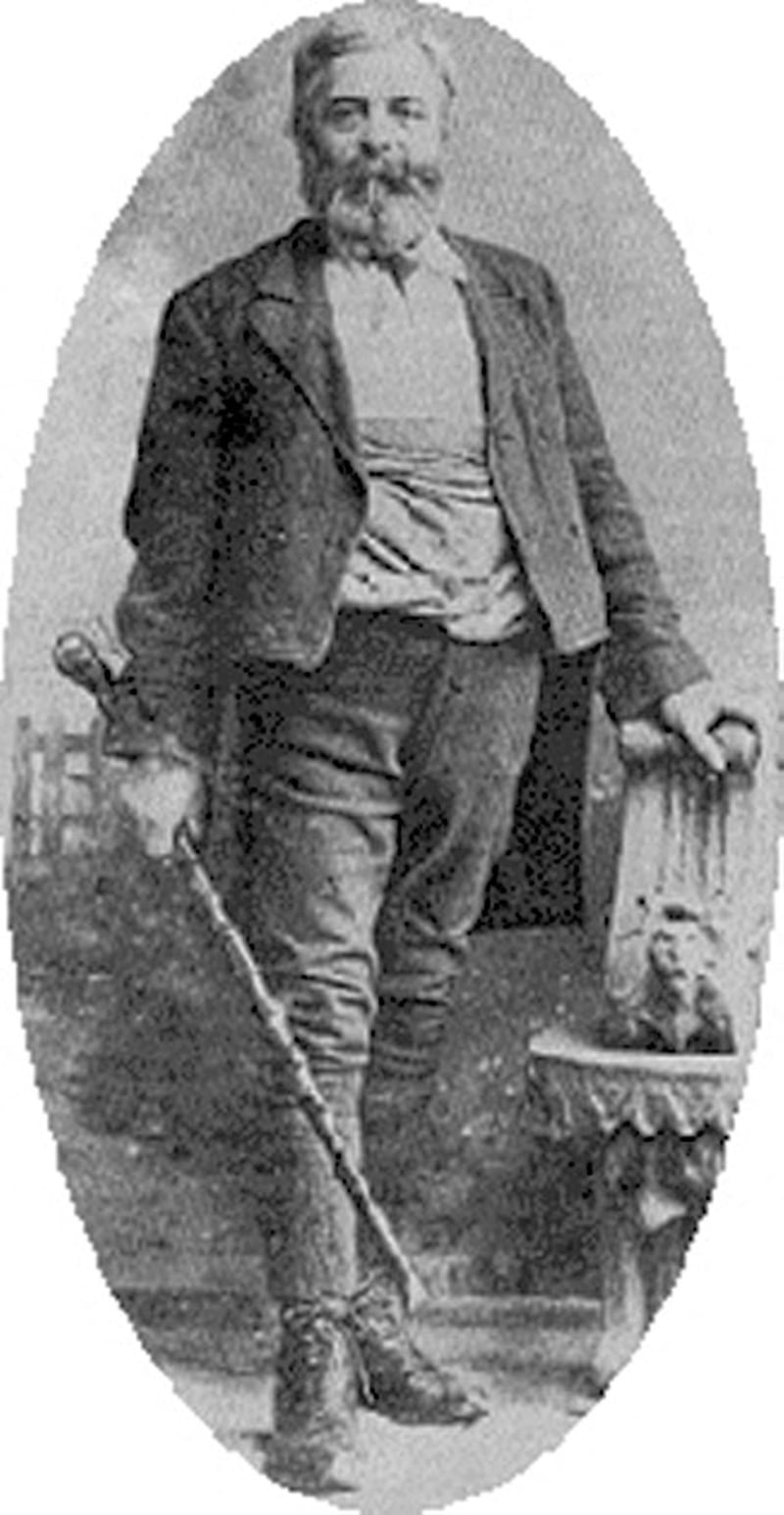
“He contacted me and said that Down GAA wanted to research the county’s connection with Michael Cusack for the 125th anniversary of the GAA.”
Michael Cusack, originally from Carran in county Clare, had married Imelda Woods from Dromore in county Down after his days as a teacher at St Colman’s College in Newry
Michael explained: “Fintan said: ‘Nobody knows anything about them and it would be interesting to know what happened to them’.
“He wanted to find out if there were still connections to the family around Dromore, or around anywhere, that the GAA could be in contact with. I did the research into the Woods family and I gave a couple of talks on it and the most common question was ‘What about Michael Cusack’s brothers or sisters? Where are they now?’
“I was able to tell them that he had three brothers and a sister, but there was nothing on any of them. I was able to tell them absolutely nothing about them.”
And so he began to trace the family through Wales and England, Australia and the United States. One by one, he tracked them down.
John and Mary both emigrated to Australia and Michael was able to get in touch with Mary’s great-great grandson Peter Buchanan who lived in Sydney. Peter had never heard of the GAA.
“There is a club called Michael Cusack’s in Sydney named after his great-great uncle, but he had no knowledge of it,” Michael explained.
Then, using a valuable tit-bit of information from the archives, Michael discovered that Michael Cusack had gone to “visit his brother” – either Patrick or Thomas - in Wales.
“It didn’t say which brother, but I knew it was either Thomas or Patrick and eventually I got a guy in Wales called Thomas but I lost him in 1891,” Michael explained.
“I couldn’t find anything going through the census records of anything else I could find.
“I decided to broaden it out and I found him in Wimbledon. In the 1911 census I got the word that clinched it for me – ‘Carran, county Clare’ and that was the townland the Cusacks grew up in.”
Thomas ended his days in Wimbledon, London where he died leaving no family and was buried at Gap Road cemetery. Michael and Maria made their way to Gap Road and found his unmarked grave.
“He never married, he worked in the Civil Service and lived in digs all his life until he died in 1933,” Michael explained.
“There probably wouldn’t have been more than three or four people at his funeral and I would be 99.9 per cent certain that no-one stood at his grave from the day of his funeral until Maria and I stood there. Nobody knew he was there.”
Three down one to go, but Patrick, the youngest Cusack brother, eluded him, much to Michael’s frustration, until he finally made the crucial breakthrough.
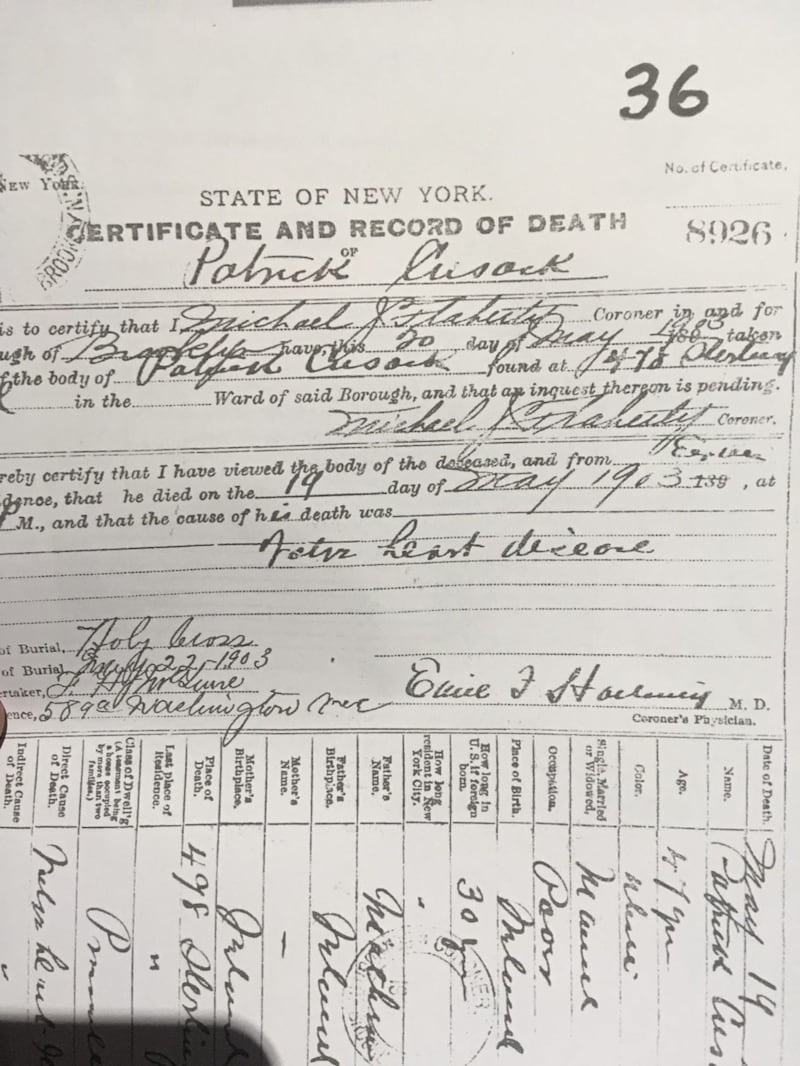
“I was 99.9 per cent sure that he didn’t go to Australia, I knew it was the American continent and at that time when the Irish went to America they went mainly to New York. I kept at it and, by luck, I picked him up.”
Patrick had emigrated from county Clare to the United States in 1870 aged 18 and eventually settled in Brooklyn, New York.
“The only record of him in Ireland indicates that he was present at the death of his father (Patrick senior) on July 8, 1968,” Michael explained.
“His sister and three brothers had already left home and it was no surprise that Patrick decided there was no future for him in Ireland and emigrated to the States.”
Patrick married Mary Murtha, who had left Ireland from Kilmurray in county Clare six months after he had, in 1878 and census records indicated that he worked as a street paver throughout his working life.
“The 1901 US census showed that Patrick had been unemployed for six months and it is likely that this was due to illness because on May 19, 1903 he died from heart disease at his home at 478 Sterling Place, Brooklyn.
“Eight years later his wife Mary died from cancer and both are buried at Holy Cross Cemetery, Flatbush, Brooklyn, together with three infant children.”
They were survived by two sons – Matthew and Thomas W. - and a daughter Catherine. Matthew never married but Thomas W did and he went on to have four boys and a girl including Charles E. Cusack who was killed in action in Italy during the Second World War.
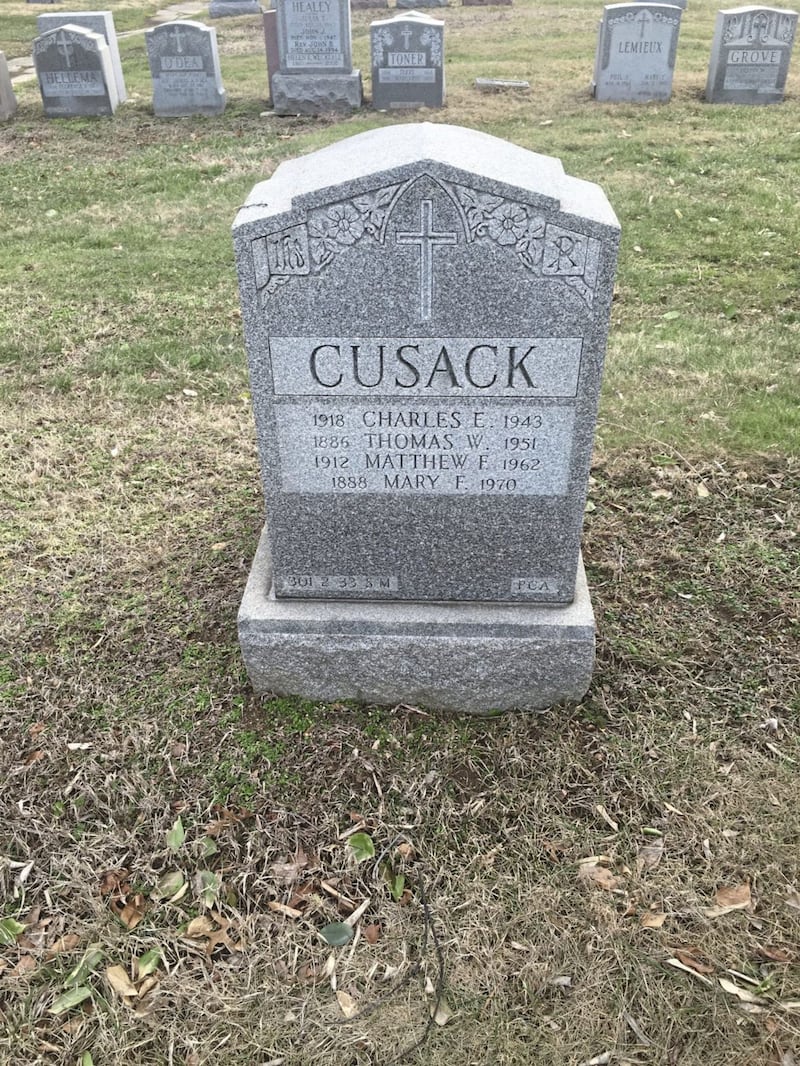
His untimely death continued the trend of a lack of male heirs in the Cusack family.
Michael Cusack had three sons, but none of them fathered a boy and so the family name died out in Ireland.
The same is true of his brother John who went to Australia and had six children, all of them girls.
Meanwhile, Thomas Cusack had no children while Patrick had four sons but only one – Thomas W. – fathered a boy. That boy, Thomas W. Cusack jnr, and his son Robert are the only two male descendants of Matthew and Bridget Cusack (the parents of Michael Cusack) in the world.
Michael says a little “luck here and there” helped him navigate his way through the archives but of course there’s much more to it. His results come from hours and hours spent poring over death records, marriage records, censuses, baptismal records and newspaper clippings.
“I came across a newspaper obituary of Thomas W Cusack, grandson of Patrick Cusack, who died on February 20, 2004,” he explained.
“The obituary listed the names of his five children and an address at East Islip, New York. I went online and got the address of Thomas W’s son Robert C Cusack and wrote to Mr and Mrs Robert Cusack.
“I got a reply from Mrs Cusack informing me that Robert was her ex-husband but that she would give my letter to her son to pass on to him. Robert in turn passed it on to Barbara King, his niece, the daughter of his sister Mary King, nee Cusack.
“I got in touch with Barbara and found out that neither she nor any of her family had ever heard of Michael Cusack, the GAA, or any other family connection.
“She was amazed and thrilled that I was able to tell her so much about her extended family and in particular the Australian side of the family and I have been able to bring the two branches of the family together for the first time since 1864 – 154 years – when Mary Cusack left Ireland to go to Australia.”
Amazingly Barbara also revealed that her son – who was oblivious of his family connection to the GAA - had played Gaelic Football and that he was also a keen bagpiper who had played at functions to welcome football and hurling teams to New York.
Last year, Barbara got in touch to tell him that her daughter Kerry was holidaying in Ireland.
“I got an email from Barbara who told me that Kerry happened to be in Ireland touring around,” he explained.
“I had emailed her back and suggested that Kerry went to Croke Park to see the statue of Michael and the Cusack Stand.
“She went to the entrance and the guy there wasn’t going to let her in, she told them she was a descendant and I think they just laughed when she told them. Eventually she got in and took a photograph; she is the only one of her family to have been there.
“She was staying at Cabra Castle and I went up there and met her – after eight years of delving into the Cusack past I eventually got to meet a real Cusack.”
Is his research complete? Well, no. He hasn’t been able to nail down what happened to Catherine Cusack, a daughter of Patrick, who vanished from records in 1915. She is only one who still eludes him.
“Hopefully I will track her down eventually,” says Michael.
“I enjoyed doing it, I enjoy the hunt.
“Every day this country benefits from the work Michael Cusack did to set up the GAA day and it’s nice to learn something about the family.”
Who was Michael Cusack?
THE founder of the GAA was born on September 20, 1847 in the parish of Carran, county Clare and died in Dublin on November 27, 1906 at the age of 59.
He trained to be a teacher and was principal of Lough Cutra national school, Galway between 1866 and 1872, earning a salary of £44. Hhe switched to St Colman’s College, Newry in 1871 and was professor of Maths and English until 1874 when he moved to Blackrock College and then onto Kilkenny and Clongowes Wood.
Cusack married Margaret Imelda Woods from Dromore, county Down in St Colman’s Church, Dromore on June 14 1876 and attended the first meeting of the Dublin Hurling Club, formed "for the purpose of taking steps to re-establish the national game of hurling" in 1882.
The weekly games of hurling in the Phoenix Park became so popular that, in 1883, Cusack had sufficient numbers to found Cusack’s Academy Hurling Club which, in turn, led to the establishment of the Metropolitan Hurling Club.
On Easter Monday 1884, the Metropolitans played Killiomor in Galway. The game had to be stopped on numerous occasions as the two teams were playing to different rules. It was this clash of styles that convinced Cusack that, not only did the rules of the games need to be standardised, but that a body must be established to govern Irish sports.
He was also a journalist and on October 11 1884, an article, written by Cusack, entitled 'A word about Irish Athletics' appeared in the United Ireland and The Irishman.
A week later, Cusack submitted a signed letter to both papers announcing that a meeting would take place in Hayes’ Commercial Hotel, Thurles on November 1, 1884. On this historic date, Cusack convened the first meeting of the ‘Gaelic Athletic Association for the Preservation and Cultivation of National Pastimes’.
Maurice Davin was elected president; Cusack, John Wyse-Power and John McKay were elected secretaries and it was agreed that Archbishop Croke, Charles Stewart Parnell and Michael Davitt would be asked to become patrons. From that initial meeting grew the association we know today.
